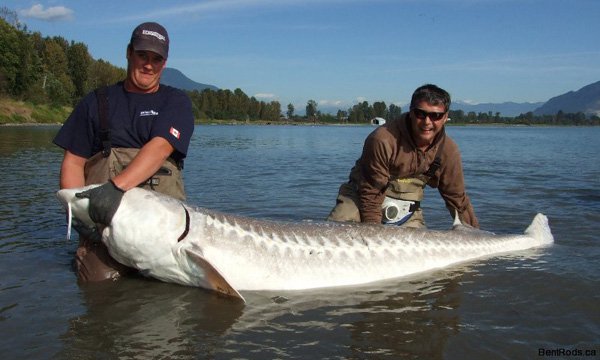How to Use Flies to Catch Saltwater Fish...What Species, Techniques?
Salt water fly fishing is one of the most exhilarating experiences you can have on the water. With modern fly lines and equipment, almost all species can be targeted.
There are several types of salt water fishing, inshore, fishing the Flats, Bayous, and Off-Shore.
Most Fly Fishing is done for inshore species, although tuna, billfish and sharks are becoming more popular. The favored quarries in the U.S. are bonefish, permit, pompano, bluefish, dorado, snook, speckled sea trout, tarpon, barracuda, mackerel, redfish, snappers, flounder, striped bass, sea bass, and other inshore species.
Salt water fly rods are different than freshwater rods, even of the same weight. Freshwater rods have smaller guides, faster actions and will break when tackling even moderate-sized marine fish.
You don't have to mortgage your home to get good salt-water equipment, though. Unless you plan on regularly battling billfish, 100+ pound tarpon and large barracuda, a 3 piece, 9 wt. rod with a fighting butt extension is perfect for most salt water fishing situations. Boron and graphite have pretty much replaced all other rod materials, so that part is easy.
For tarpon and other large species, you might want to go up to a 10, 12 or even 15 wt. rod. Rods longer than 9 are useful mainly to skilled casters who specialize in long-distance casting. The average angler will not benefit from the extra length. A good salt water rod can be purchased for around $100.00. There may be cheaper ones out there, but I wouldn't trust them. They will not cast good and will fail at the worst possible time. In fly fishing gear, you really do get what you pay for.
The next requirement is for a reel. A reel made for catching trout in mountain streams won't feed the bulldog in the salt. Salt water reels have multiplying gears, stainless-steel bearings and strong disc-drags for fighting tough fish. Unlike most freshwater angling, you will be playing all salt water fish from the reel. And salt water fish can make such fast runs that palming the rim for extra drag is out of the question, unless you enjoy friction burns on your hand, hence the strong disc-drag.
Most salt water angling is done with a method of long-distance casting called shooting. A special short weight-forward section of line is spliced to several hundred yards of thin running line. It feels weird casting this set-up at first, but it grows on you quickly. The long-distance casts are necessary for wary fish such as permit, tarpon and bonefish. Oftentimes, you will be in very clear, very shallow water and the fish are ultra-spooky.
Once you have your equipment, you can decide where to fish. Practice your casting, especially the Double-Haul cast. You'll be using it a lot to 'shoot' line out. Casting lessons are very reasonable and a good investment. You can search the internet to find a certified instructor near you.
Bayous and inlets are easy to fish. Just fish them as you would a bass lake, with a few cautions. This is where you catch sea bass, striped bass, speckled trout, redfish, mackerel, flounder, snapper, bluefish, etc.
Lake Fishing in Alaska
The Most Popular Walleye Fishing Contests


